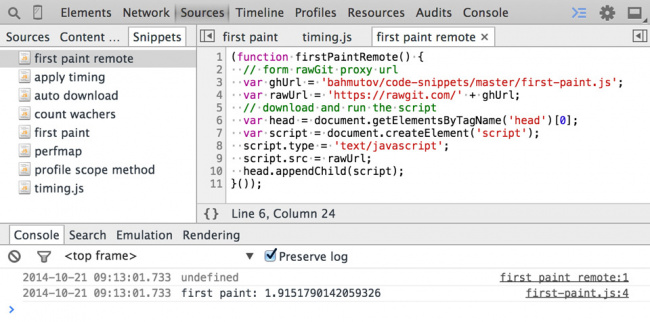Javascript
Contents
Definition
JavaScript, often shortened to JS, is a scripting language that allows web developers to build interactive web pages. It is one of the most used programming languages in web development, along with HTML and CSS.
In the past, JavaScript was primarily used for frontend development. However, it has gained popularity for backend development with frameworks like Node.js.


An example of JavaScript files in the head of our tf-idf tool page
What is JavaScript used for?
JavaScript is used for a range of different things, including automatically updating newsfeeds, forms, search features, and other interactive features. Nearly all interactive features you find on web pages are created using JavaScript.
JS is widely used in front-end development because it is supported by all major browsers. It is also used in other development disciplines including, mobile development, game development, and backend development.
JavaScript libraries and frameworks
To make programming easier, there are many JS libraries and frameworks available. JS libraries are used to reduce the time it takes to write the code for more complex functionalities. They allow developers to use prewritten code snippets and create and store their own code snippets for future use.
JavaScript frameworks are templates, providing a code structure for you to follow. This extra structure can make development easier, but it also adds limitations that a developer needs to work within.
Examples of JS libraries include:
- jQuery
- ReactJS
- Dojo Toolkit
- Google Polymer
Examples of JS frameworks include:
- AngularJS
- Vue.js
- Apache Royale
When JavaScript is written without the use of libraries or frameworks, it is called “vanilla JavaScript.”
Client-side JavaScript vs server-side JavaScript
JavaScript can be used on both the client-side and the server-side. Client-side JavaScript makes the manipulation of browsers and webpages possible. It runs the script on the user’s browser and is one of the most common uses of JavaScript.
Server-side JavaScript runs on the server instead of the browser and is less common than client-side JavaScript. Node.js is an example of a popular server-side scripting framework for JavaScript.
JavaScript and search engines
Although JavaScript is an important programming language for web development, it isn’t always easy for search engines to process. This can create SEO issues if the JavaScript on a page isn’t optimized for search engine crawlers.
This is especially true for sites that serve important content, links, or other resources using JavaScript instead of HTML and CSS. This can cause issues with crawling since content can be available to users but not to search engine crawlers.
To understand why search engines like Google can have difficulty with JavaScript, it’s important to know that Google indexes and renders pages separately because running a script takes up more resources.
Rendering costs more time and resources, so these two stages are split up to allow HTML and CSS to be indexed quickly. This means that content served using JavaScript can take longer to process, causing indexing to take more time.
Over the past few years, major search engines, like Google, have gotten better at crawling and indexing JavaScript. However, many smaller search engines or other crawlers may still have issues loading it.
There are a few rendering methods that can help improve the way crawlers process JavaScript, namely:
Server-side rendering
When JavaScript is rendered on the server-side instead of on the client-side, both users and crawlers are served the fully rendered page. This prevents many of the SEO issues that can be caused by JavaScript but also takes up a lot of server resources.
Dynamic rendering
Dynamic rendering allows server-side rendered resources to be sent to crawlers while allowing other users to render content on the client side. This prevents SEO issues related to crawling and indexing while also preventing additional strain on the server.
Hybrid rendering
Hybrid rendering allows for the important resources to be rendered on the server-side, with the less vital content being rendered on the client-side. This spreads the load between the client and the server while still allowing crawlers to view the important content instantly.
Its importance in web development and SEO
JavaScript is one of the most important programming languages to understand. It is very dynamic, being used for both frontend and backend web development.
Given the impact it can have on SEO as well as a page’s speed and performance, it is an important topic to understand. By understanding what JavaScript is and learning the best practices, you can learn to program more effectively and improve your site’s performance.
Related links
- https://www.youtube.com/watch?v=PFwUbgvpdaQ
- https://www.w3.org/wiki/JavaScript_best_practices
- https://developers.google.com/search/docs/guides/javascript-seo-basics
Similar articles
| About the author |
 |